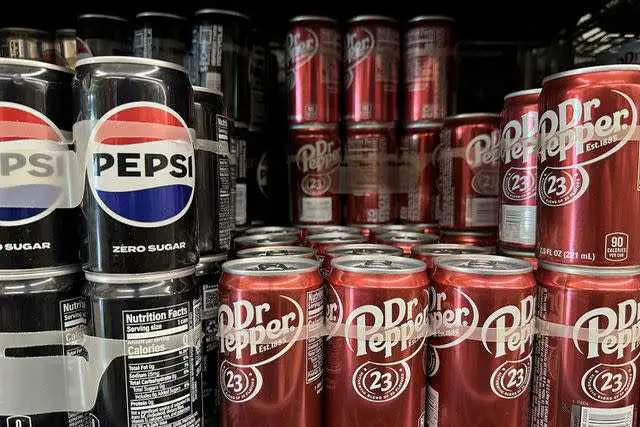Dr Pepper has made waves in the beverage industry by surpassing Pepsi and claiming the title of the second most popular soda in the United States. This milestone marks a significant shift, as Pepsi had held onto this position for decades. What has fueled Dr Pepper’s sudden surge in popularity? How has this brand, known for its distinct blend of 23 flavors, managed to win over soda enthusiasts nationwide?
Historical Roots and Market Transformation
With its origins dating back to 1885 when pharmacist Charles Alderton created it in Waco, Texas, Dr Pepper is one of the oldest soft drinks in the US, predating both Coca-Cola and Pepsi. Alderton’s vision was to capture the essence of the drugstore where he worked, resulting in a beverage with a unique mix of 23 flavors. While Dr Pepper had a loyal following in the American South, it was a smaller player in the national soda market until the 1970s when it began targeting a broader audience, positioning itself as an alternative to traditional cola flavors.
Recent data from Beverage Digest shows that Dr Pepper secured 8.3% of the US soda market in 2023, overtaking Pepsi by a slim margin. Coca-Cola retains its top position with a 19.2% share. Dr Pepper’s rise can be attributed to several factors, including its innovative marketing strategies that resonate with younger consumers, as well as the introduction of trendy flavors like Strawberries & Cream and Creamy Coconut, aligning with popular tastes like the “dirty soda” trend.
Key Factors Driving Dr Pepper’s Growth
1. Innovative Marketing Strategies: Dr Pepper’s increased focus on engaging younger audiences through platforms like TikTok has been instrumental in its success. By tapping into viral trends and creating content that appeals to Generation Z, Dr Pepper has expanded its consumer base.
2. Introduction of New Flavors: Continuously innovating with new flavors like Strawberries & Cream and Creamy Coconut has kept Dr Pepper relevant and exciting in a competitive market, aligning with modern food and beverage trends.
3. Strategic Distribution Efforts: Dr Pepper’s flexibility in distribution, being sold alongside both Coca-Cola and Pepsi, has widened its reach and availability, contributing to its market growth.
Community and Expert Response
The community response to Dr Pepper’s ascent has been positive, with consumers sharing their experiences with new flavors on social media platforms. Industry experts, such as Duane Stanford from Beverage Digest, acknowledge Dr Pepper’s gains against Pepsi due to its marketing and flavor innovation strategies. Timothy Cofer, CEO of Keurig Dr Pepper, credits successful flavor introductions for the brand’s growth and relevance. Analysts suggest that Pepsi’s focus on zero-sugar products and food business may have diverted attention from its core soda offerings, allowing Dr Pepper to capitalize on this gap.
Industry Impact and Tips for Soda Lovers
Dr Pepper’s rise signifies a broader trend towards unique flavors in the beverage industry, influencing competitors to introduce spiced variants. For soda lovers looking to enhance their Dr Pepper experience, creative mixes with fruit juices, citrus zing with lemon or lime, minty freshness with mint leaves, creamy indulgence with ice cream, and frozen cocktails with rum and cherry liquor can provide exciting twists on the classic soda.
In conclusion, Dr Pepper’s climb to become the second most popular soda in the US underscores its innovative marketing, flavor introductions, and distribution strategies. By catering to evolving consumer preferences and staying ahead of trends, Dr Pepper has cemented its position as a formidable contender in the competitive beverage market.






